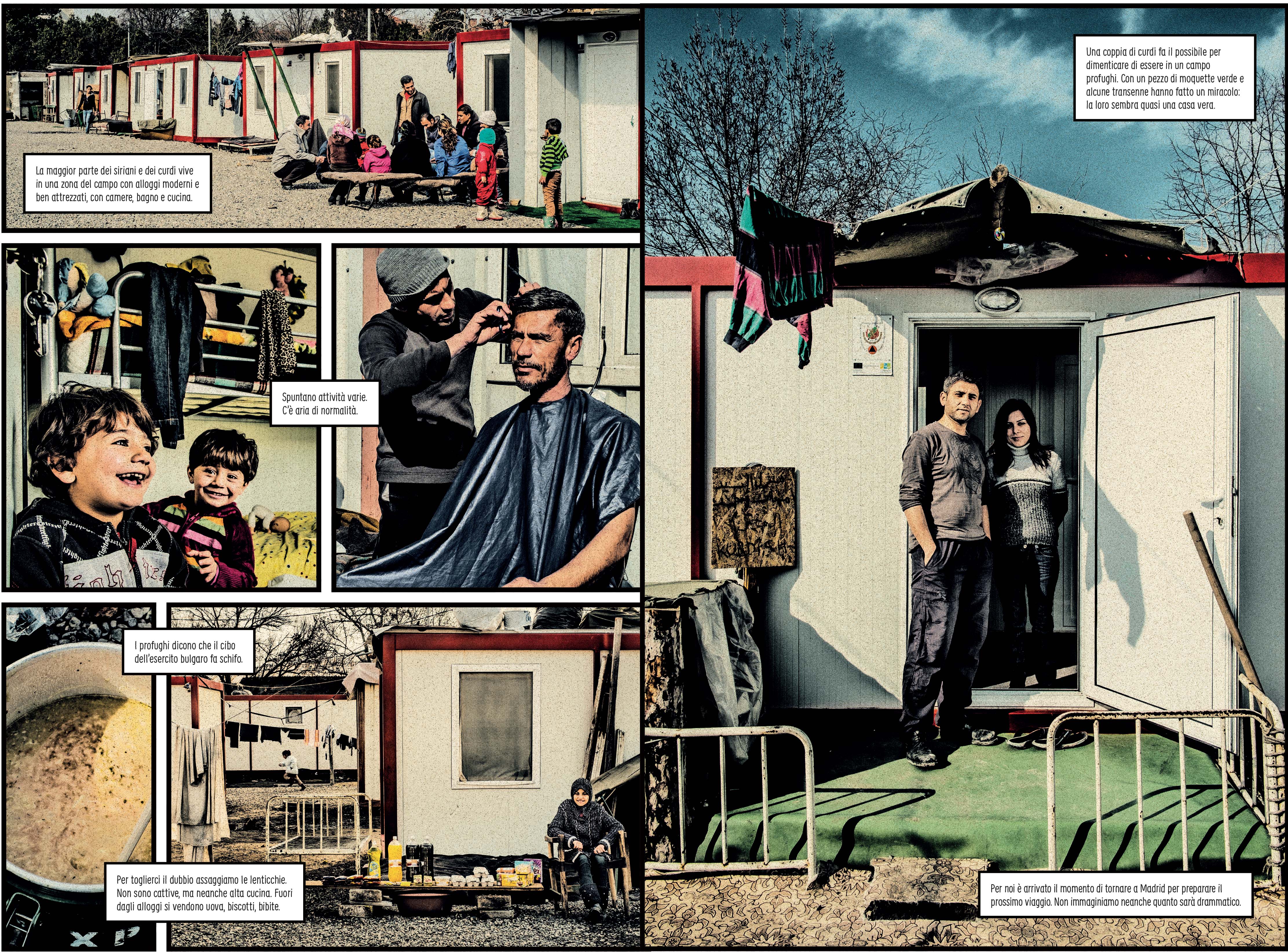Contemporary reportage, between photography and graphic novel
Workshop with Carlos Spottorno | 23 and 24 March 2019

I learned – begins Carlos Spottorno – my way of producing photographic novels to tell complex journalistic stories in a way that is effective and understandable for everyone.
Who it is for: Who wants to expand their narrative skills by going beyond the classic publishing structures.
Goals: Understand how to create a photographic reportage using innovative narrative techniques.
Equipment to bring into the classroom: Computer. It will be useful to have a layout or photo editing program.
Can photography, photojournalism and graphic novels live together?
And can they be complementary narrative forms?
And if so, how?
These questions, and not only, will be answered by the photographer Carlos Spottorno who will hold the workshop “The contemporary reportage, between photography and graphic novel” on March 23 and 24 at CAMERA.
In photojournalism, photography and text seem condemned to remain side by side, like two independent bodies that only rarely meet. Sometimes you choose to publish the image of greater impact, even if it does not reflect the story that accompanies it, running the risk that the photograph takes the upper hand over the text. But is it possible to avoid it and tell a story in a simple, effective and attractive way? Yes, it is and that’s what Carlos Spottorno and Guillermo Abril did to make the book La crepa: using the techniques of sequential narration used in the comic strip, made of text and images.
After years of shooting photo reportages – continues Spottorno – I asked myself how to better integrate image and text to allow a more engaging and correct reading of the story. I learned from the art of comics, the techniques of the sequence, integrating images and text in the final layout. But my path is just one of many possible variations. In this workshop I will challenge students to overcome my discoveries, making them work on their personal insights.
What will happen in the days of workshops, from the words of Carlos Spottorno: I will introduce myself and present my book “La crepa”, from the initial project to the final result. This will allow me to show students how a classic reportage can be turned into a photographic novel. To understand where it comes from, we’ll take a look at History: Egyptians, Mayans, Romans and other cultures who used sequential visual language for an illiterate public. History in sequence in the Middle Ages. Religious art. Modern times: the first cartoonists. We will talk about some important contemporary graphic novels, such as “Maus”, “Persepolis”, “Pyonyang” and “The Photographer”. We will talk about comic journalism. But we will also address the specific themes of the script, the sequence, the chapters, the formal choices, the coherence of the colors, the combinations of text and image, the grids, the visual structures, the rhythm, the management of time and semantic units. Participants will create a brief history by working in groups. Each group will receive a large set of photos, will do online research to learn more about the assigned subject and then develop their own sequence by processing and adding texts to the images. We will discuss together the results achieved and I hope that we will conclude the workshop full of greater knowledge of the narrative in sequence of real events.